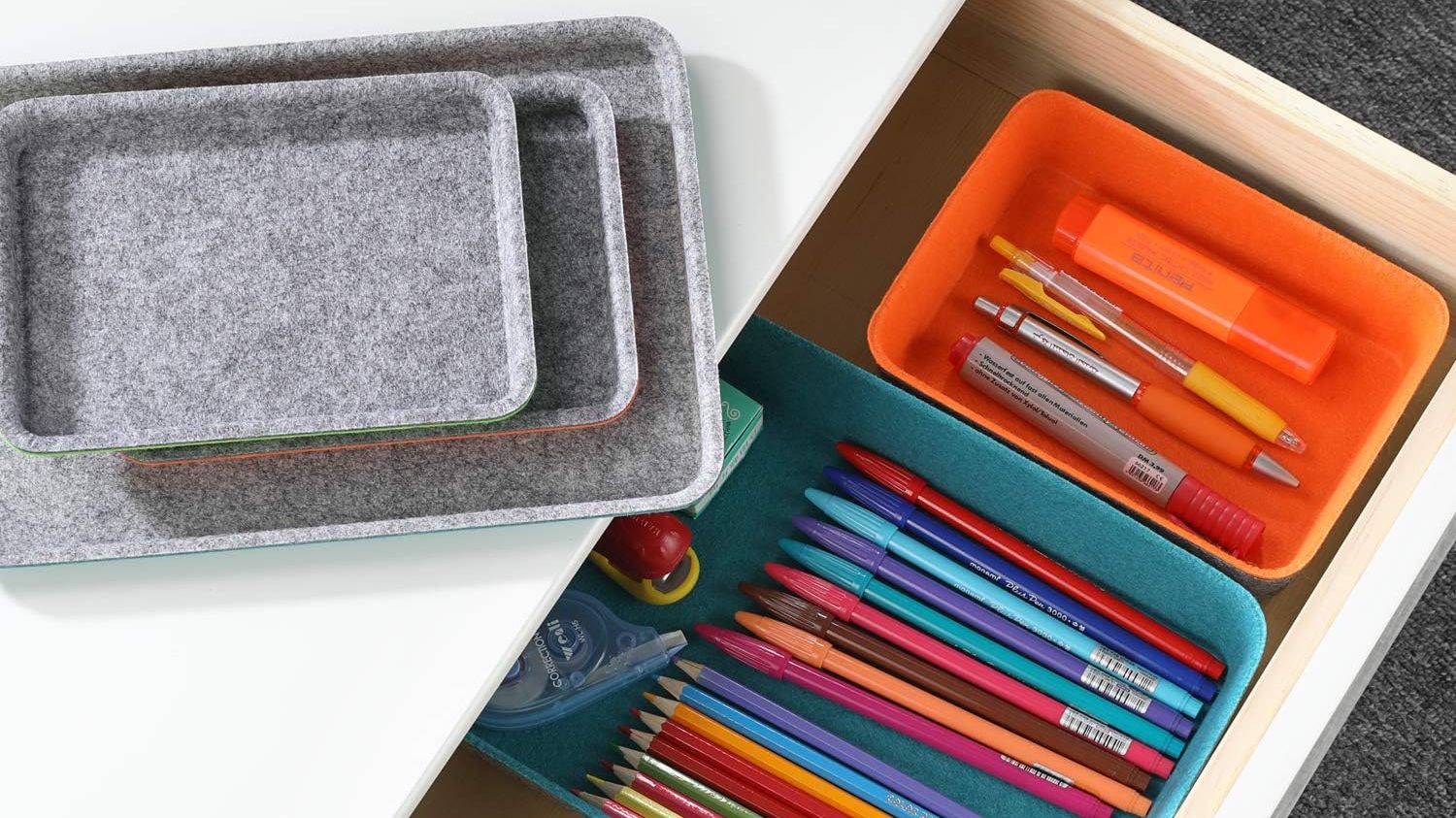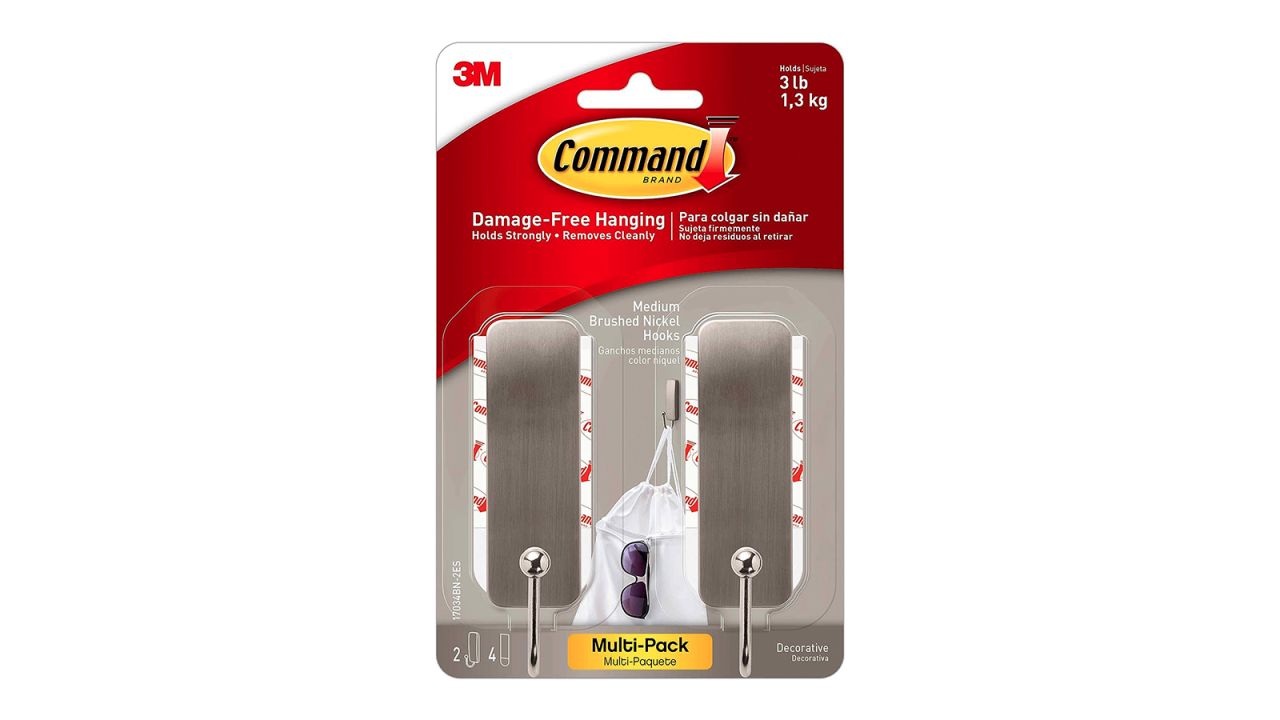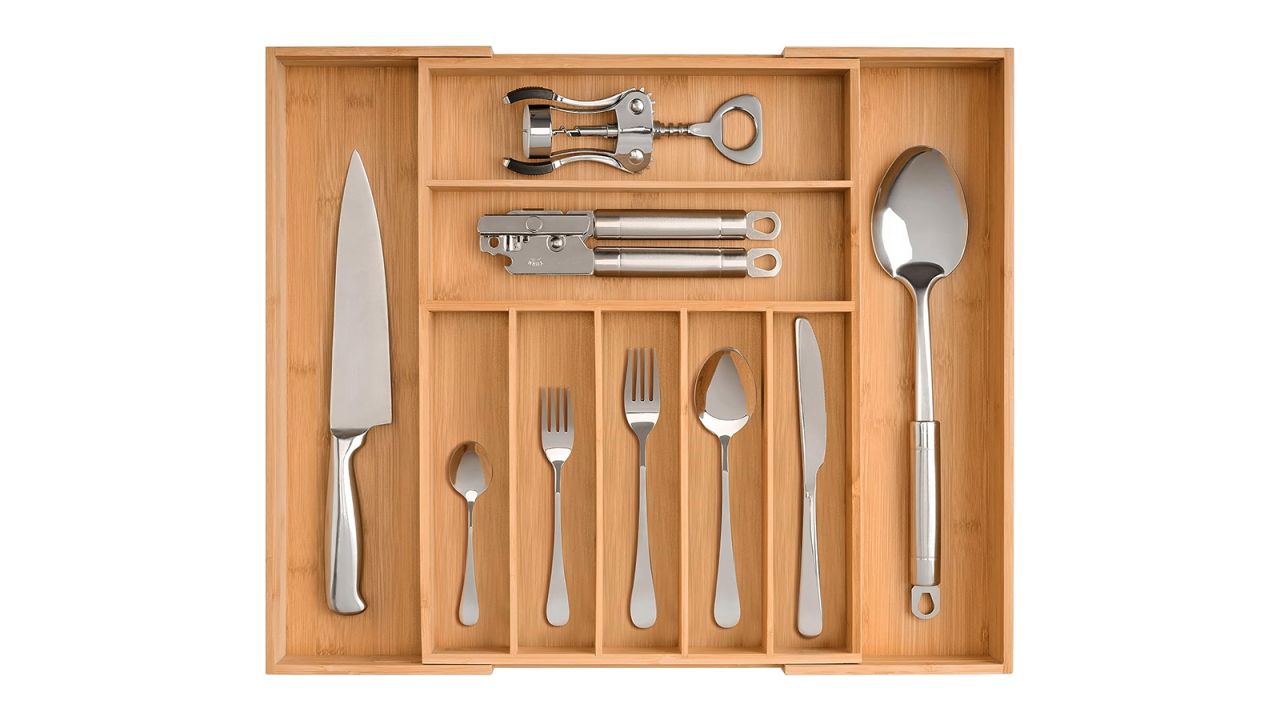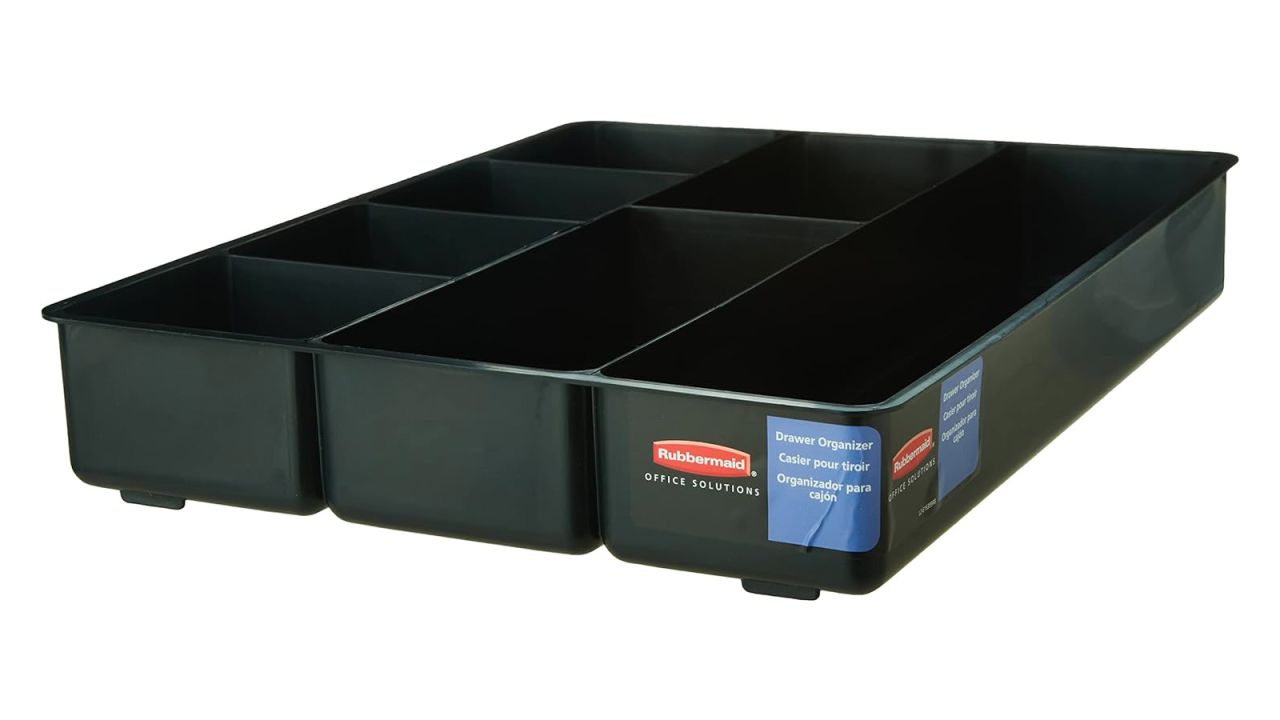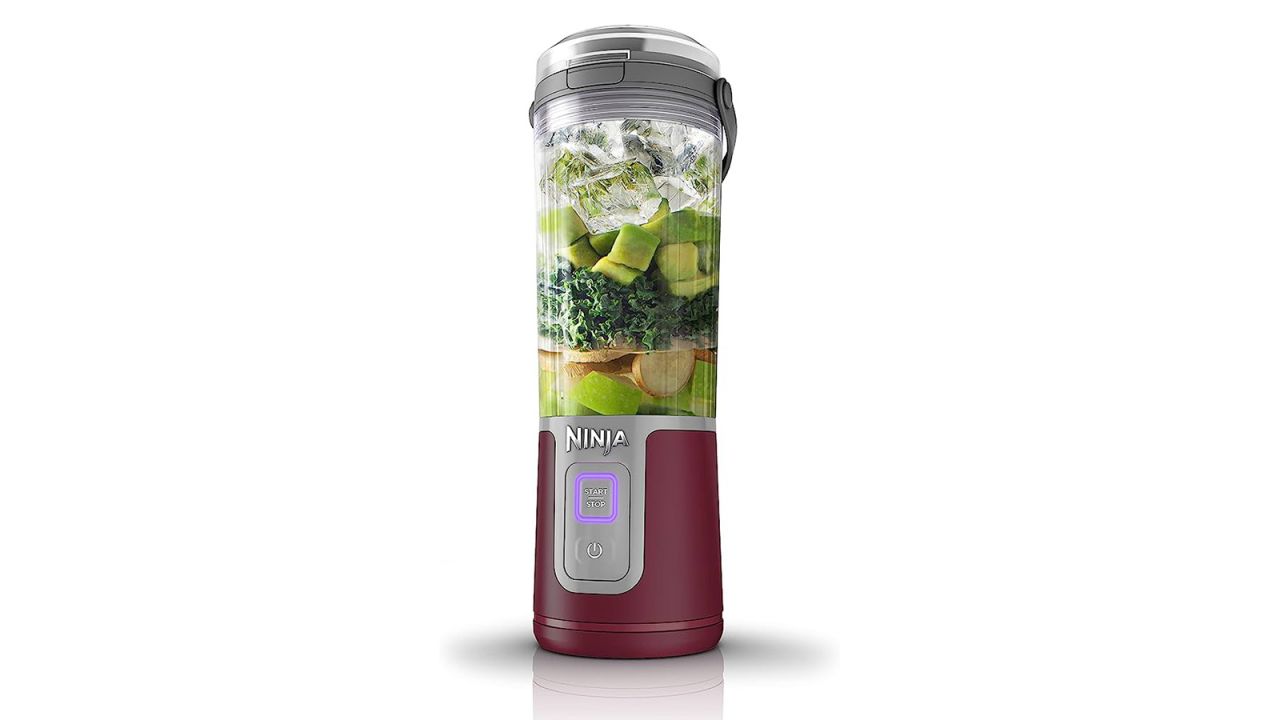The humble junk drawer is a fixture in almost every home. True to its name, the junk drawer is a place to store everything that doesn’t have a natural home elsewhere. But the junk drawer also serves an important function, and bringing some order to the junk can make a big difference.
To help make your junk drawers as functional as possible, we asked for input from experts Ann Lightfoot, a professional organizer and the co-founder of Done & Done Home; Nonnahs Driskill, founding organizer at Get Organized Already; and Julian Thomas, a DIY and home lifestyle expert and Command Brand partner. The experts we spoke to started with some general advice about junk drawers.
“I think the biggest mistake is not having the junk drawer serve a functional purpose,” Thomas says. “I recommend establishing a rule for the household that the junk drawer will only hold certain items. After establishing that rule, I then recommend giving oneself a goal of clearing out the junk drawer consistently, like at the end of every month.”
The importance of regularly editing your junk drawer was emphasized by all the experts we spoke to. “The biggest mistake people make when it comes to their junk drawer is not decluttering often enough,” Lightfoot says. “We often find that people use junk drawers for items they don’t know what to do with and all sorts of random things end up making this space — you guessed it — junky.”
Driskill echoes those warnings about undisciplined junk drawers, and offers some suggestions on how to make them more functional. “Designate a ‘drug store drawer’ or cabinet in your bathroom for medications and first aid,” she advises, “and a supply shelf somewhere for extra batteries, light bulbs and cords.” She also suggests giving your junk drawer or drawers more precise names to remind yourself that the space has a specific purpose. “Call it the ‘tool drawer’ or the ‘bits and bobs’ drawer so you don’t put actual trash in there,” she says.
We’ve rounded up these experts’ best organizing solutions to bring order to even the junkiest of junk drawers.
"The best tip we have to keep your junk drawer functional," Lightfoot says, "is to only keep things in this space that will be used in the approximate area and have no other place to be stored. For example, we often see things like rubber bands and screwdrivers in kitchen junk drawers but those items are typically better stored in a craft room, tool box or garage. If you have things in your junk drawer that you haven't used in the past six months, try to find a better place for them and save the space for the items you use frequently where your drawer is located." A tackle-box-style organizer is a perfect solution for everything from nails and screws to crafting supplies like beads and wire.
"My favorite tip that I learned from my parents growing up," Thomas says, "is to compartmentalize your junk drawer! To some that might defeat the purpose of a junk drawer, but it makes a massive difference. I suggest taking the time to find compact storage solutions, and designate each insert to hold a specific item. For example, these trays from The Container Store would be great for holding ketchup packets, or batteries."
"Junk drawers usually have small items that can get lost if they aren't contained," Lightfoot says. "We love clear acrylic divider bins so categories can be maintained and random things stay separated."
"Dividers that adjust with springs are great for a good-enough sort of your items," Driskill says. These flexible drawer dividers allow you to bring order to a drawer full of oddly shaped items.
For a more streamlined look, Lightfoot suggests looking for organizers with lids. "When your junk drawer is decluttered but all the random items still feel messy to you, bins with lids may help! Visual clutter can be irritating and these stackable felt drawer organizers with lids keep clutter out of sight," she says.
"If your junk drawer is bursting at the seams and you can't relocate any items," Lightfoot says, "an under-shelf drawer system may be the solution for you! You could put it under a cabinet shelf to give yourself some breathing room."
"I recommend making sure the junk drawer is for items that truly do not have a designated space elsewhere in the home," Thomas says. "For example, batteries, flashlights and loose screws should live in a toolbox and not in the junk drawer. Mail and bills should live in a designated catch-all tray, not the junk drawer." If tools are taking over your junk drawer and you need a better solution, check out our guide to the best organizing systems for tools.
"I love using collapsible crates to organize any drawer! Because they come in a variety of colors," Thomas says, "it's easy to designate a crate to hold specific items. For example, one crate can hold loose craft supplies like pens, pencils, scissors, etc. While another crate can hold leftover takeout condiments."
The experts we spoke with shared tips for people who struggle with organizing. "Set up a small, catch-all tray on the counter above the drawer," Driskill suggests, "and only move things into the drawer that make the cut."
"Another tip that I learned (thanks to therapy)," Thomas says, "is to invest in a 'rolling junk cart' rather than a junk drawer. Having to battle with adult ADHD, it's very easy for me to be unorganized and a junk drawer is a recipe for items, even important notices, to get lost and forgotten."
"A junk cart allows for me to pile things up that don’t necessarily have a designated home yet," Thomas says, "and slowly take my time to find an appropriate place for those items or eventually toss them out. A junk drawer allows for items to be 'out of sight, out of mind,' but a 'junk cart' is bulky and takes up space, so it forces me to organize miscellaneous items. I recently added a small hook to the side of my junk cart to hang my keys since I never knew where to put them when I got home."
Junk drawers are a place where stray objects can find a second life as organizers. "Box lids, small box bottoms and small plastic containers who’ve lost their lids," can be used to bring order to a junk drawer, Driskill says. "I use these things because they are free and do the job just as well. Shallow bowls can be pretty, too."
Utensil organizers came up over and over again as smart options for bringing order to a junk drawer. "Depending on the size of one’s junk drawer," Thomas says, "this organizer is adjustable to fit the desired width of the drawer, and it comes compartmentalized already!"
"If you're looking for a more eco-friendly option for your junk drawer," Lightfoot says, "we use adjustable bamboo drawer dividers whenever possible. They work great and you can feel good about making a sustainable choice."
Driskill picked this multi-compartment organizer that will work for most junk drawers because, she says, it's "less fidgety than configuring separate pieces."
"A wall caddy," Thomas says, "such as the Command Heavyweight Large Caddy, is a great option for those who might not have a designated junk drawer. Because the caddy sticks with adhesive, it can be easily placed behind a cabinet door instead."
"We see a lot, (and by a lot, we mean a whole lot) of cords in junk drawers," Lightfoot says. "After you go through them all and get rid of any random ones that don't belong to any tech you currently own, consider using reusable cord wraps to keep them organized. They also work great on the multitude of pens that likely live in your drawer."
"I’m sure I’m not the only one with multiple charging cables for my phone," Thomas says, "and cables that I don’t know what they're for but don't want to throw out. These cord bundlers are great for keeping loose cables organized. Because they use adhesive, I attach them on the sides of my junk drawer for easy access, especially when I have guests over and they need a quick charge."
Cord management was a hot topic among our experts. "This cord organizer can be used for cords and other things," Driskill says. "I might even remove the lid if it’s going to stay in your drawer."
"Another item that makes junk drawers inefficient is the ubiquitous battery," Lightfoot says. "Different sizes, different brands, different expiration dates all rolling around making things difficult. We highly recommend using a battery organizer so you always know which batteries you have on hand and which ones you need more of because there's nothing worse than a dead remote and no AAs."
"Keeping with the theme of an 'aesthetically pleasing junk drawer,'" Thomas says, "I’m always impressed by those that take the time to line their shelves and drawers with contact paper. Peel and stick wallpaper is also a great option for this."
"Another thing I love to use to organize my junk drawer(s) and supply cabinets is an embossed label maker," Thomas says. "It's super affordable, and I can easily remove and create new labels as needed. Not to mention, it’s pretty trendy."
